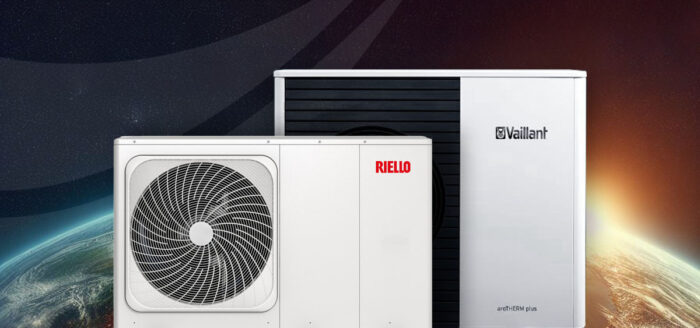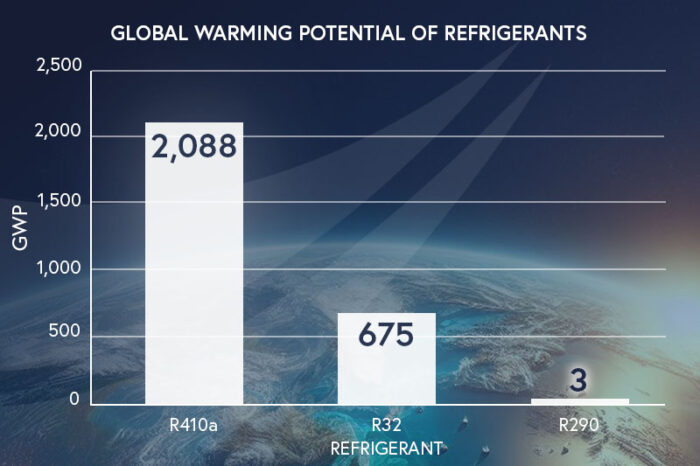
R290 Refrigerant & A New Era of Heat Pumps
3-minute read
As the Renewable Heating industry finishes off another year on a high, the focus shifts towards 2024 and what improvements can be made to product offerings. Manufacturers often use the first quarter of the year to make changes to pricing structures and, more crucially, to bring new models to market, with this coming year seeing a notable shift towards a new tier of products from almost every avenue within the industry. Simply put, we are entering a new era of the Air Source Heat Pump, focusing primarily on the heat pump refrigerant.
Global Warming Potential of refrigerants
To understand the reason for this change, we must first look at the Global Warming Potential of the refrigerants that have been used in the majority of heat pumps for the past decade, these being R410a and R32. Global Warming Potential (GWP) is the measure of how damaging each refrigerant is to the environment, based on how long it actively absorbs heat in the atmosphere, thus decreasing the rate at which energy can escape. Using carbon dioxide as a reference point, the GWP index will show a comparative number relating to the amount of energy absorbed by one ton of a gas over a 100-year period, compared with that of CO
2. As CO
2 is the reference, it has a GWP of 1, compared with the following:

| Refrigerant |
GWP |
| R410a |
2,088 |
| R32 |
675 |
| R290 |
3 |
It’s easy to see why R410a was initially phased out in 2017, in favour of R32. Seven years later and the industry has progressed further, to a point where every manufacturer is obliged to have an R290 model in their range - and it’s even easier to see how the R290 GWP value is driving that change.
Further benefits from the move to R290 refrigerant
R290 refrigerant is a type of natural gas. It is a pure form of propane – a hydrocarbon that is in a gaseous state at ambient temperature and pressure. The next question is, what additional benefits can we expect to see from this change?
Since R290 refrigerant is much more efficient than its predecessors, allowing for higher flow temperatures at lower outdoor temperatures. This is particularly useful in the ever-expanding retrofit market, and will allow for many more house types to become viable for an air source installation. It is also naturally occurring, hence the low GWP, and therefore is more readily available than its predecessors, helping to push the speedy deployment that the industry, the government, and the planet, is calling out for.
Manufacturers’ response
Our partners at the Vaillant Group have championed the use of R290 refrigerant in their heat pumps for a number of years, and there will shortly be new models available from Mitsubishi, Samsung and Riello. The Riello R290 heat pump, Aquasnap will be showcased in their demonstration vehicle at the CCL headquarters in Glasgow on January 15
th and 19
th, as well as at the CCL Technology Day in the spring.
Useful links:
Mitsubishi Electric - Ecodan R290
Samsung - Mono R290
Vaillant aroTHERM plus heat pump

